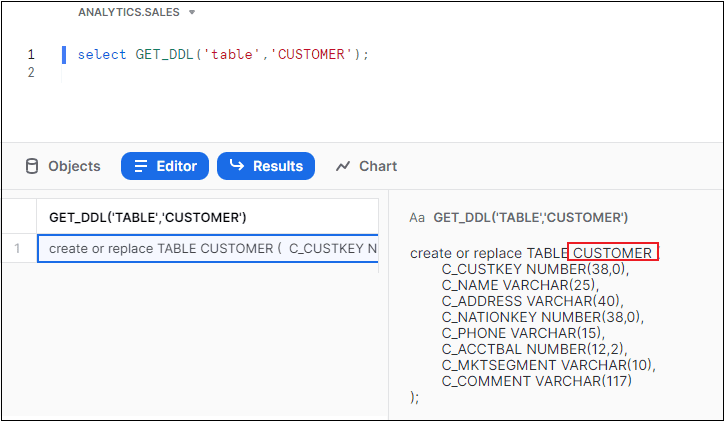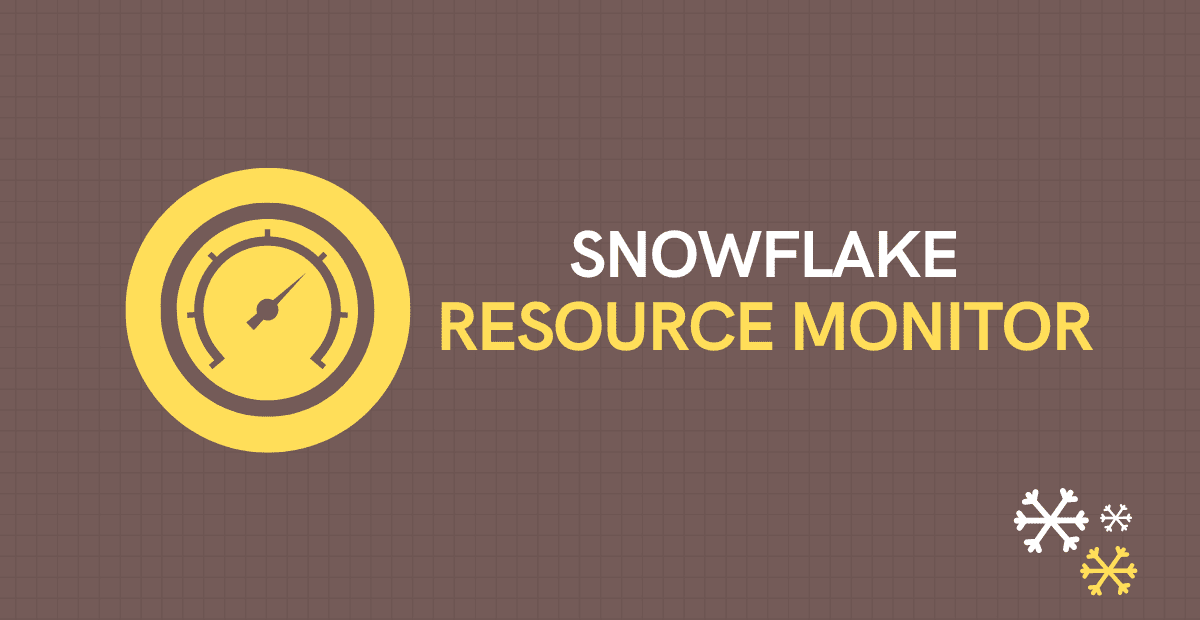GET_DDL Function
Snowflake provides GET_DDL Function using which DDL of database objects can be extracted. The GET_DDL function returns a DDL statement as output that can be used to create the database objects.
GET_DDL function takes object type and object name as input to generate the DDL of the required object.
Syntax of GET_DDL Function
The syntax of GET_DDL function in snowflake is as shown below
GET_DDL( '<object_type>' , '[<namespace>.]<object_name>' )The object_type argument specifies the type of the object for which DDL is required. Below are the valid object types that can be passed to the GET_DDL function.
- DATABASE
- FILE_FORMAT
- FUNCTION (for UDFs, including external functions)
- PIPE
- POLICY (masking and row access policies)
- PROCEDURE (for stored procedures)
- SCHEMA
- SEQUENCE
- STREAM
- TABLE (including for external tables)
- TAG (object tagging)
- TASK
- VIEW (including for materialized views)
The object_name argument specifies the name of the object for which DDL is required.
The namespace argument is the database and/or schema in which the object resides which is optional if database and schema are in use in current session in the worksheet.
Triggering GET_DDL function to extract DDL
Trigger the GET_DDL function to extract the DDL of a Snowflake object as shown below.
SELECT GET_DDL('<object_type>' , '[<namespace>.]<object_name>');The below example extracts the DDL of a table named CUSTOMER.
SELECT GET_DDL('table', 'customer');If the database and schema are not in use, you can pass the complete namespace to extract DDL as shown below.
SELECT GET_DDL('table', 'mydb.sales.customer');Extract DDL of all objects in a database using GET_DDL
For databases and schemas, GET_DDL is recursive i.e. it returns the DDL statements of all supported objects within the specified database/schema.
The below example extracts the DDL of all supported objects present in the database my_db.
SELECT GET_DDL('database', 'my_db');The below example extracts the DDL of all supported objects present in the schema my_schema.
SELECT GET_DDL('schema', 'my_db.my_schema');GET_DDL Output
By default the DDL statement returned by GET_DDL function do not use a fully-qualified named of the object.
The below example shows the output of query providing the DDL of customer table without database and schema information.

To return the DDL with fully-qualified named, use the true indicator in the syntax of GET_DDL function as shown below.
GET_DDL( '<object_type>' , '[<namespace>.]<object_name>', true );The below example shows the output of query providing the DDL of customer table with a fully-qualified named providing the database and schema information.

Subscribe to our Newsletter !!
Related Articles:

Snowflake Resource Monitors assist in cost management and prevent unforeseen credit usage caused by operating warehouses.

Learn different ways to remove duplicate records from a Snowflake table using SWAP WITH and INSERT OVERWRITE commands.

Snowflake Dynamic Data Masking is a security feature that allows you to mask sensitive data in database tables, views, and query results in real-time.




